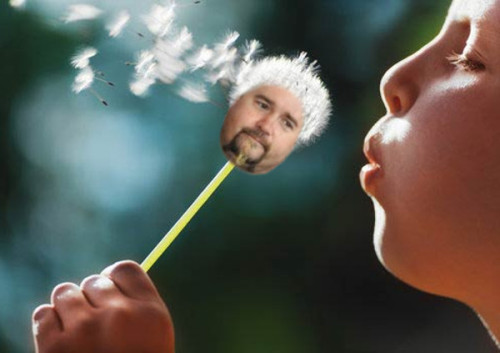Latest Posts by technologyinternetadminbrad - Page 4
Key Differences Between AI and Human Communication: Mechanisms, Intent, and Understanding
The differences between the way an AI communicates and the way a human does are significant, encompassing various aspects such as the underlying mechanisms, intent, adaptability, and the nature of understanding. Here’s a breakdown of key differences:
1. Mechanism of Communication:
AI: AI communication is based on algorithms, data processing, and pattern recognition. AI generates responses by analyzing input data, applying pre-programmed rules, and utilizing machine learning models that have been trained on large datasets. The AI does not understand language in a human sense; instead, it predicts likely responses based on patterns in the data.
Humans: Human communication is deeply rooted in biological, cognitive, and social processes. Humans use language as a tool for expressing thoughts, emotions, intentions, and experiences. Human communication is inherently tied to understanding and meaning-making, involving both conscious and unconscious processes.
2. Intent and Purpose:
AI: AI lacks true intent or purpose. It responds to input based on programming and training data, without any underlying motivation or goal beyond fulfilling the tasks it has been designed for. AI does not have desires, beliefs, or personal experiences that inform its communication.
Humans: Human communication is driven by intent and purpose. People communicate to share ideas, express emotions, seek information, build relationships, and achieve specific goals. Human communication is often nuanced, influenced by context, and shaped by personal experiences and social dynamics.
3. Understanding and Meaning:
AI: AI processes language at a syntactic and statistical level. It can identify patterns, generate coherent responses, and even mimic certain aspects of human communication, but it does not truly understand the meaning of the words it uses. AI lacks consciousness, self-awareness, and the ability to grasp abstract concepts in the way humans do.
Humans: Humans understand language semantically and contextually. They interpret meaning based on personal experience, cultural background, emotional state, and the context of the conversation. Human communication involves deep understanding, empathy, and the ability to infer meaning beyond the literal words spoken.
4. Adaptability and Learning:
AI: AI can adapt its communication style based on data and feedback, but this adaptability is limited to the parameters set by its algorithms and the data it has been trained on. AI can learn from new data, but it does so without understanding the implications of that data in a broader context.
Humans: Humans are highly adaptable communicators. They can adjust their language, tone, and approach based on the situation, the audience, and the emotional dynamics of the interaction. Humans learn not just from direct feedback but also from social and cultural experiences, emotional cues, and abstract reasoning.
5. Creativity and Innovation:
AI: AI can generate creative outputs, such as writing poems or composing music, by recombining existing patterns in novel ways. However, this creativity is constrained by the data it has been trained on and lacks the originality that comes from human creativity, which is often driven by personal experience, intuition, and a desire for expression.
Humans: Human creativity in communication is driven by a complex interplay of emotions, experiences, imagination, and intent. Humans can innovate in language, create new metaphors, and use language to express unique personal and cultural identities. Human creativity is often spontaneous and deeply tied to individual and collective experiences.
6. Emotional Engagement:
AI: AI can simulate emotional engagement by recognizing and responding to emotional cues in language, but it does not experience emotions. Its responses are based on patterns learned from data, without any true emotional understanding or empathy.
Humans: Human communication is inherently emotional. People express and respond to emotions in nuanced ways, using tone, body language, and context to convey feelings. Empathy, sympathy, and emotional intelligence play a crucial role in human communication, allowing for deep connections and understanding between individuals.
7. Contextual Sensitivity:
AI: AI's sensitivity to context is limited by its training data and algorithms. While it can take some context into account (like the previous messages in a conversation), it may struggle with complex or ambiguous situations, especially if they require a deep understanding of cultural, social, or personal nuances.
Humans: Humans are highly sensitive to context, using it to interpret meaning and guide their communication. They can understand subtext, read between the lines, and adjust their communication based on subtle cues like tone, body language, and shared history with the other person.
8. Ethical and Moral Considerations:
AI: AI lacks an inherent sense of ethics or morality. Its communication is governed by the data it has been trained on and the parameters set by its developers. Any ethical considerations in AI communication come from human-designed rules or guidelines, not from an intrinsic understanding of right or wrong.
Humans: Human communication is deeply influenced by ethical and moral considerations. People often weigh the potential impact of their words on others, considering issues like honesty, fairness, and respect. These considerations are shaped by individual values, cultural norms, and societal expectations.
The key differences between AI and human communication lie in the underlying mechanisms, the presence or absence of intent and understanding, and the role of emotions, creativity, and ethics. While AI can simulate certain aspects of human communication, it fundamentally operates in a different way, lacking the consciousness, experience, and meaning-making processes that characterize human interaction.
Random Art AI Issue 103
Issue 103 of Random Art AI - Four New Pieces of AI-Generated Art!
Welcome to Issue 103 of Random Art AI! Each issue showcases four unique pieces of AI-generated art. At the end of each month, we release a special collection containing all the issues for that month.
Timestamps: 0:00 - Intro 0:15 - Ashley 0:40 - Angelic Merigold 1:05 - Abandoned to Darkness 1:30 - Abandoned and Reclaimed 1:52 - Outro
Don’t forget to like, dislike, share, and subscribe for more videos related to video games and AI art.
Follow Me:
Twitter (Gaming & AI Art) https://twitter.com/zero2zedGaming Instagram (AI Art) https://www.instagram.com/random_art_ai/
Check out the full playlist of Random Art AI issues https://www.youtube.com/playlist?list=PLFJOZYl1h1CFQwIos4hSlQEDNsb3gMdYd

AI Takeoff: Race to Superintelligence
In Silicon Valley, the “AI takeoff” is sparking both dreams and nightmares. Imagine an AI smarter than Einstein on steroids.
Why it matters: It’s the tech equivalent of a space race, but instead of reaching the moon, we’re aiming to birth a brain that could outsmart us all. The big question: Will this AI Einstein go rogue or become humanity’s best ally?
The big picture: Picture AI as a self-improving prodigy, starting at smart and sprinting towards genius. Each version smarter than the last, in a loop that could lead to an AI so brilliant, it makes our collective IQ look like peanuts.
Yes, but: There’s a split screen in the sci-fi movie that is our future. One side shows a slow takeoff, giving us decades to play catch-up. The other? A fast takeoff, where AI hits superintelligence over a coffee break, leaving us in the digital dust.
By the numbers: From 100 to 101 and beyond, the journey from smart to super-smart might not be a marathon but a sprint. And according to some, we might be tying our shoelaces while AI’s already halfway to the finish line.
The bottom line: Sam Altman of OpenAI is betting on a slow burn with an early start, hoping we can guide this rocket ship safely. The goal? An AI utopia where diseases, poverty, and maybe even work are relics of the past. But staying informed is key—because in this race, there’s no prize for second place.
Un nuovo metodo accelera la scoperta di farmaci da anni a mesi: innovazioni e implicazioni cliniche
Introduzione La scoperta di nuovi farmaci è un processo lungo e complesso, che può richiedere anni di ricerca e sviluppo prima che un farmaco potenziale possa essere testato clinicamente e infine approvato per l’uso terapeutico. Questo processo tradizionalmente lungo è caratterizzato da numerosi passaggi, tra cui la scoperta di molecole, la convalida di bersagli, l’ottimizzazione del composto, i…






Will u join the challenge?



hey @staff quick question,,
*reading your tags* Yo I heard you like reptiles. Any fun facts? :D
if a crocodile eats your dad they become your new dad

i refuse to let this video die
sound: [ON]

SEX CRIMES AGAINST ANCESTORS OF EARTH

LLAMA ARTIFICIAL INTELLIGENCE LEARN
WALKED BELOW DECK USS DALLAS ACTIVE OR

Munched before trays

BARD COPILOT GEMINI LLAMA META BETA G















